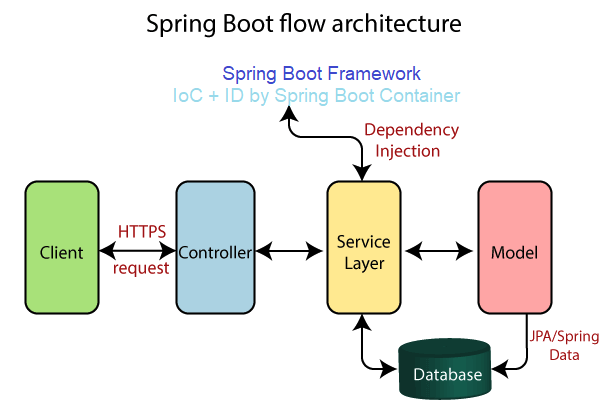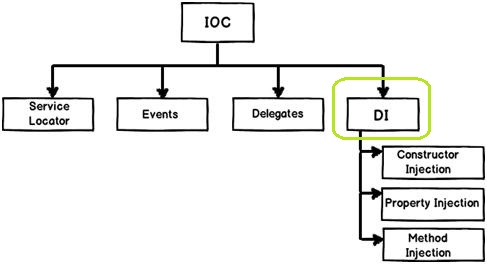Spring Boot: Dependency Injection
Spring Boot Dependency Injection
📘 Dependency Injection
Dependency injection (DI) is a design pattern that allows objects to receive their dependencies from external sources rather than creating them internally. In other words, it is a way to manage the dependencies between objects in a software application.
1 Overview
Dependency injection (DI) is a design pattern that allows objects to receive their dependencies from external sources rather than creating them internally. In other words, it is a way to manage the dependencies between objects in a software application.
In Spring Boot, the dependency injection is provided by the Spring Framework. The Spring container is responsible for creating and managing the objects in the application, and it uses dependency injection to provide the objects with their dependencies.
There are thre types of dependency injection:
Constructor injection: The dependencies are provided to the class through its constructor.Setter injection: The dependencies are provided to the class through setter methods.Method Injection: The dependencies are provided to the class through an interface which declares the method(s)
With dependency injection, objects are no longer responsible for creating or managing their dependencies, which makes the code more maintainable and easier to test (not used in Spring Boot).
The @Autowired annotation is used in Spring Boot to automatically wire a bean from the Spring application context into a class field or method.
This allows you to use dependency injection to provide objects with their dependencies without having to manually create or manage them.
Dependency Injection (DI) is a design pattern that allows objects to receive their dependencies from external sources rather than creating them internally.
Spring Boot usesDI to manage the dependencies between objects and provide them with their dependencies using Constructor injection and setter injection, the@Autowired annotation is used to wire the bean from the Spring application context.
2 Inversion of Control IoC
IoC is a design pattern that allows for the inversion of control of object creation and management. DI is the process of providing dependencies to a class, rather than the class creating them itself.
Both IoC and DI are related to the DIP, which is a design principle that promotes decoupling and abstraction.
The hierarchy between these concepts is that IoC is the pattern that enables DI, and DI is a way of implementing the DIP.
Inversion of Control (IoC) is a design pattern commonly used in Spring Boot applications, where the framework is responsible for creating and managing objects (beans) and their dependencies.
The control of the application flow is inverted, as the framework decides when and how to instantiate objects, rather than the developer having to explicitly create them.
This simplifies the development process and makes the code more modular and testable.
3 Dependency Inversion Principle DIP
The Dependency Inversion Principle (DIP) is a software design principle that states that high-level modules should not depend on low-level modules, but both should depend on abstractions.
This allows for decoupling and easier maintenance of the codebase, as changes in low-level modules don’t affect high-level ones.
The use of interfaces and abstract classes are common in implementing the DIP.
4 Dependency Injection DI
Dependency Injection (DI) is the process of providing dependencies (objects) to a class, rather than the class creating them itself.
This is often done using frameworks like Spring Boot, where dependencies are defined as beans and injected into other beans using annotations.
This reduces the amount of boilerplate code and makes the codebase more modular and maintainable.
The DI principle is closely related to the DIP, as it allows for the injection of abstractions rather than concrete implementations.
5 Advantages
Inversion of Control is a principle in software engineering by which the control of objects or portions of a program is transferred to a container or framework.
It’s most often used in the context of object-oriented programming.
By contrast with traditional programming, in which our custom code makes calls to a library, IoC enables a framework to take control of the flow of a program and make calls to our custom code.
- decoupling the execution of a task from its implementation
- making it easier to switch between different implementations
- greater modularity of a program
- greater ease in testing a program by isolating a component or mocking its dependencies and
- allowing components to communicate through contracts

